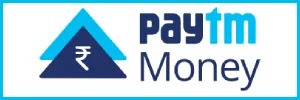The repo rate, or the rate at which RBI lends to banks, has been cut to 5 per cent, while the reverse repo rate, or the rate at which the central bank absorbs liquidity, has been pared to 3.5 per cent. The move surprised the market, which had given up hopes of an immediate reduction after the central bank last week prodded banks to lower rates.
Over the next few days, bankers said, their asset-liability committees would meet to look at the cost of funds and then decide on cutting lending rates.
“The move is prompted by the fact that inflation is coming down and there is a fear that the numbers may go down to negative territory in June. Following the rate cut, bond yields would go down further. We expect the cost of funds to drop by 30-35 basis points in a fortnight. When the cost of funds come down for us, we will reduce the home loan rates. But we need to watch the situation for two-three weeks as we borrow from banks,” said a senior HDFC executive. He added that banks would see the impact of the rate cut immediately.
An Axis Bank executive said that the bank would review its home loan rates soon but did not comment on the prime lending rate.
A cut in reverse repo rates will discourage banks from parking surplus funds with RBI through the liquidity adjustment facility and instead boost lending to the commercial sector. Over the last three months, RBI has slashed the rate by 250 basis points.
With the latest repo rate reduction, the fifth since October 20, the overall cut since the global credit crisis intensified added up to 400 basis points. Since September, the central bank has also lowered the cash reserve ratio, or the proportion of deposits that banks set aside, by another 400 basis points to inject Rs 1,60,000 crore into the system.
Through the measures announced by it, RBI has provided Rs 3,88,000 crore primary liquidity.
Banks have, however, refrained from passing on the entire benefits to the borrowers and have reduced the lending rates by 50-200 basis points, with the private and foreign banks being reluctant to cut rates.
As a result of risk aversion by banks, which have parked larger sums of money in government securities, between April and February 13, the flow of resources to the commercial sector from banks and non-banks during fell to Rs 4,98,136 crore, as against Rs 6,08,351 crore during the corresponding period of the last year. On a year-on-year non-food credit growth, which rose to 29.4 per cent on October 10, following the lack of funds in the market, decelerated to 19.7 per cent as on February 13.
While announcing the latest set of measures, RBI, while advising banks to “monitor their loan portfolio and take early action, to prevent asset impairment” also asked lenders to appropriately price the risk “and ensure that creditworthy enterprises continue to get funding”.
Overall economic activity has slowed down with the economy projected to grow 7.1 per cent this year, as against over 9 per cent during the last three years. During the third quarter, GDP growth was estimated at 5.3 per cent. While industrial output contracted in December, exports have shrunk for four months in a row and service sector growth has moderated.
Source: business-standard.com








